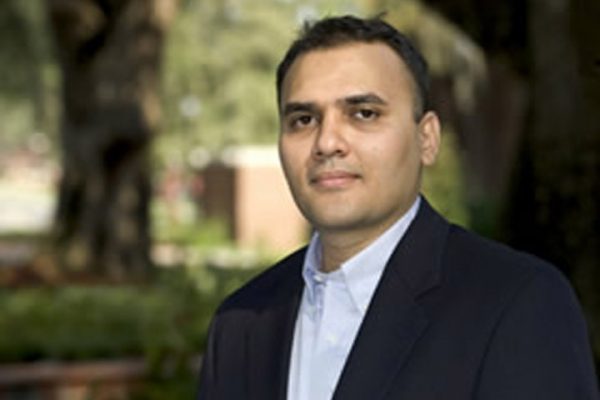
“An American university is one of the best places in the world to get a high-quality graduate education, which follows from the open culture where debate and free spirited ideas are encouraged.”
Enabling a computer to “see” requires numerous steps—capturing the information in the form of images, processing it for suitable representation, analyzing constituent parts of the image, understanding the individual parts as well as their interrelationships, and making an intelligent decision from the processed image information. “My research,” says Shantanu Joshi, a doctoral candidate in Electrical and Computer Engineering, “focuses somewhat on the middle of this vision pipeline.”
Shantanu, who recently won the Graduate Research and Creativity Award, works in the area of Statistical Shape analysis under the guidance of Anuj Srivastava, professor of Statistics and Computer Science, and with Eric Klassen, professor of Mathematics. “We assume that contents of images can be analyzed by a rich variety of features—color, textures, and boundaries—and we argue that geometrical shapes are important features for recognizing and discriminating objects in images. We are particularly interested in mathematical methods for representing, comparing, and analyzing shapes.
“Developments in the area of Statistical Shape analysis have tremendous potential for directly benefiting applications in medical image analysis, human surveillance, military target recognition, finger-print analysis, space exploration, and computational anatomy.”
Besides giving numerous talks at national conferences and publishing dozens of refereed conference proceedings, abstracts, peer-reviewed journal articles, and chapters in edited volumes, Shantanu also collaborates on several projects.
With Albert Prieto-Marquez, a graduate research assistant in Biology, he is studying shape variations in the bones of dinosaurs and reptiles. Using the knowledge gained, he is also “developing tools for anatomical shape analysis, as well as for completion and detection of missing or obscured bone fragments from images of paleontological data, which may prove useful in the inference of evolutionary relationships between species of different organisms.”
Dr. David Wilson, of the University of Florida’s Department of Mathematics in collaboration with UF’s Medical School, is interested in the analysis of the endo- and epicardial shape boundaries of the myocardium of the heart. “We are in the process of developing,” Shantanu says, “tools that will provide automatic boundary extractions between the end-diastole and end-systole frames of the heart cycle.”
This past summer Shantanu interned at INRIA, Sophia Antipolis, France’s national institute for Computer Science research. He assisted with the collaborative efforts of INRIA’s Ariana group and Florida State’s Department of Statistics. The researchers are applying statistical shape theory to the analysis of aerial and high-resolution satellite images.
An International student from India, Shantanu completed his master’s degree at FSU and will soon graduate with a doctoral degree. Of his experience, he says, “An American university is one of the best places in the world to get a high-quality graduate education, which follows from the open culture where debate and free spirited ideas are encouraged. This is what has made America great.”




